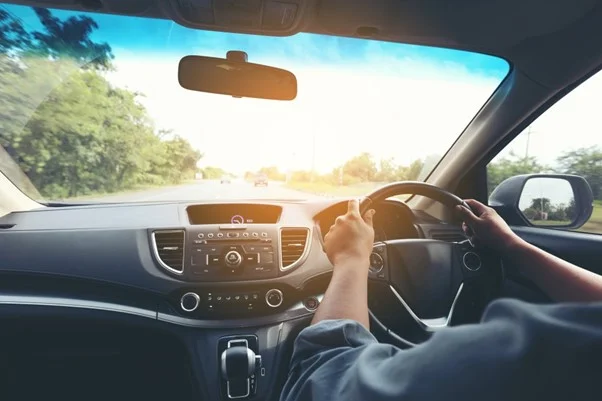Safe and sustainable transport: equalising the opportunities
Max Verberne, GM of Aftermarket at Seeing Machines, discusses how technology is the key to helping the transport sector become more sustainable – and safer.
An industry leader in computer vision technologies that enable machines to ‘see’, understand, and assist drivers, Seeing Machines prides itself on its passion to provide ‘technology to get everyone home safe’. Using the world’s most advanced human data-driven technology, Seeing Machines can enhance driver safety and contribute to the global goal of safety by dramatically reducing fatal accidents every day.
Here, Max Verberne, GM of Aftermarket at Seeing Machines, addresses how safe and sustainable transportation is a guiding light for the company’s innovation and how its driver monitoring system (DMS) technology is becoming a key contributor to enhanced safety.
Describe what UN Sustainability Goal #11 (‘Make cities and human settlements inclusive, safe, resilient and sustainable’) means for the future of the transport sector? Why is this a pivotal mission statement for humanity and how we use transport?
Max Verberne: Every year, around 1.35 million people die, and between 20 and 50 million people are injured, due to some form of transport accident caused by human error, negligence, risky behaviour, unpredictable events, or unsafe conditions. Many of these deaths occur in developing countries and the UN Sustainability Goals has a significant focus on ‘leaving no one behind’.
Therefore, the introduction of safe, resilient, and sustainable cities is of paramount importance to this goal. Safe transport should be available to all people, in all locations.
|
|
Using technology to enhance safety in public and private transport is key to equalising the opportunities for safe and sustainable transportation around the world. While a large focus of Goal #11 is providing everyone, everywhere with access to public transport, there is an underlying theme of safety. There is no point in providing transport that is unsafe, if the ultimate goal is to reduce risk. Leading this momentum for safety is the European Commission, which launched its revised General Safety Regulation in January 2020 to require all motor vehicles (including cars, vans, trucks, and buses) to be fitted with a system to detect driver alertness. |
Initially, these systems will focus on fatigue and will apply to all new vehicle models from July 2022, extending to all new vehicles from July 2024. The second stage will require an advanced system to detect driver distraction and to provide a warning when distracted driving occurs. This will apply to all new models from July 2024 and all new vehicles from July 2026.
How is DMS technology fundamental to this goal of safety?
Max Verberne: The term ‘safety’ is only relevant or even valid when there is a human involved (be it inside or outside the cabin).
I’m focusing on the Automotive market here, as they are spearheading the adoption of technology to provide advanced safety and convenience features to their customer. The dynamic within the industry, in many ways, has been driven by the path to full autonomy, which has focused most of the industry’s energy and resources towards sensing what is going on outside of the vehicle. But it’s the integration of internal cabin sensing technologies, understanding what the driver is or is not doing, that are making huge strides in safety and will ultimately achieve a zero accidents future. This applies to all forms of transport.
Early driving ‘assistance’ features, for example the automotive transmission or cruise control system, have evolved and become known as Advanced Driver Assistance Systems (or ADAS). The emergence of ADAS and external sensing technologies, such as Traffic Sign Recognition, Lane Departure Warning and Blind Spot Detection are now familiar to most of us.
Recognising that drivers are prone to error, safety technology providers to the Automotive industry in particular, are taking a systems approach to assist, enhance and even handle the driving task. However, in certain scenarios, the driver could have the upper hand to make a more informed decision. Seeing Machines is a leading provider of DMS technology that’s fast-becoming front-page news as a key contributor to enhanced safety across a range of transport sectors.
How are you achieving Seeing Machines’ imperative to ‘get everyone home safely’ by harnessing human factors with science to create artificial intelligence (AI) technology that observes the driver’s attention?
Max Verberne: Seeing Machines exists with one clear purpose – to get everyone home safely. Everything we do is focused on that outcome. Our founders invented driver monitoring system technology because they predicted that cars would be the world’s first robots, and they weren’t far off. The path to autonomy in single or commercial vehicles, while potentially longer than some may have thought, has its challenges.
When humans are faced with a range of autonomous features, or semi-automation as it is commonly referred to, there is a risk that the human and their attention state can be miscalculated. Being able to know what the driver/operator is doing, combined with what is happening in and around the vehicle they are controlling, at any given time, is critical to the safe operation. We call this supervised automation.
If the vehicle, using its range of advanced driver assistance system features, detects a portion of the road that it cannot navigate, it needs to be able to hand control back to the driver. The only way this can happen is if it knows what the driver is doing.
Understanding human behaviour is critical to this being successfully implemented. That is what Human Factors science brings to our technology. The deep understanding of humans, together with vast sets of data – naturalistic and synthetic – combines to ‘teach’ machines how to detect and understand all the variations of human behaviour, including edge cases, resulting in a sophisticated technology that can predict and detect what the human may or will do in each situation. This is done using Artificial Intelligence (AI). This AI informs the human-machine interface (HMI) to provide seamless alerts to drivers and keep them safe in almost any situation.
How is the rollout of technology such as Guardian being received across Europe/EMEA? What has the feedback been from customers?
Max Verberne: With safety a growing concern across a range of transport sectors, large vehicle operators, including bus and coach and other transport organisations have made great strides in taking a more holistic approach towards creating a safe and healthy environment for drivers and their passengers. These measures include the latest training methods and emerging safety technologies to improve driver behaviour, educate drivers around the dangers of driving while not fully engaged, and providing real-time feedback when risky driving occurs.
Today, coach and bus operators globally are turning to a range of driver fatigue and distraction detection technologies to mitigate these risks, discovering the invaluable safety benefits they provide. For safety conscious company owners, investing in this technology becomes a logical step in protecting their people.
What has the uptake been?
Many major brands, such as Shell, have already considered the benefits of, and are already using, this technology.
It should be noted, however, installing technology like this is not simply about sticking it into the cabin and telling your drivers to “deal with it”. There is a change management aspect to the deployment of any driver / operator monitoring system technology simply due to the fact that there is a sensor in the cabin of the vehicle, essentially the driver’s office, which records risky driving events.
Guardian is not a CCTV, it only records events when distracted or drowsy driving is detected. But that needs to be clearly communicated to drivers. Every operator that Seeing Machines has dealt with has installed Guardian to keep their drivers safe. This naturally, also keeps the communities through which they drive, safe.
What features of the system particularly resonate with customers? What are they finding the most useful?
Max Verberne: Guardian is more than in-cabin technology. On its own, it’s proven to reduce fatigue related driving by more than 60%. However, when combined with Seeing Machines 24/7 Monitoring Service, where human analysts classify risky driving events in real-time, the risk is reduced by more than 90%. This is significant and monitoring is our unique offering and really underpins why operators buy it.
Further to the monitoring, our service includes notifications, also in real-time. That means that if a driver has had a fatigue related driving event, their operator is notified and is then able to implement their bespoke ‘fatigue intervention plan’. They may have a policy of taking a driver off the road immediately, but at the end of the day, they are aware of the risks their drivers may be facing any day of the week at any hour, and they are equipped to deal with that risk immediately. That is the most powerful feature of our overall solution and ultimately, what our customers buy.
How is the technology developing? What is the next step of its evolution?
Max Verberne: We are currently developing our next generation Guardian. This will be its third generation and it will incorporate our automotive grade algorithms. The launch of that system is planned for next calendar year and will be a great solution for enterprise customers as well as commercial vehicle (bus and truck) manufacturers as they will need to comply with pending regulations, especially in Europe and likely soon to be required in North America.
Originally published on December 8, 2022 on Just Auto, Mining Technology and Rail Technology.

